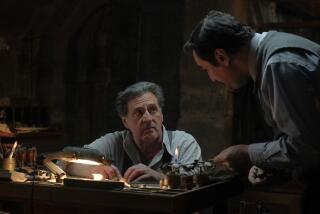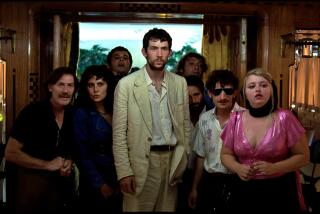Review: ‘Elevator to the Gallows’: A legendary Louis Malle film returns to the big screen
“Elevator to the Gallows” is as elegantly fatalistic as it sounds. Made in 1957, at a turning point in French cinematic history, it’s saturated with the romantic atmosphere of Paris. It drew upon several major talents – director Louis Malle, star Jeanne Moreau, musician Miles Davis – and achieved near-legendary results with all of them.
“Elevator” was the solo directing debut for the then 24-year-old Malle. Titled “Ascenseur Pour l’Échafaud” (literally Elevator to the Scaffold) it has both the brisk craftsmanship and efficiency of classic French cinema and a breathless hint of the energy of the New Wave that was only a few years away.
The film made a major star of Moreau, whose work remains completely bewitching. It inspired from Davis an improvised jazz score that, recorded in a single night and anchored by his piercing work on the trumpet, has become iconic in its own right. And in a new DCP restoration, it showcases Henri Decaë’s luminous, adventurous cinematography. It’s not something you want to miss.
Adapted by Malle and Roger Nimier from a pulp novel by Noël Calef, “Elevator” has one of those twisty plots that, as typified by films like Henri-Georges Clouzot’s “Diabolique” and the Boileau-Narcejac novel that was the basis of Hitchcock’s “Vertigo,” was very much of a French taste.
It starts with what has the look of a perfect crime. Unflappable Julien (Maurice Ronet, later the star of Malle’s “The Fire Within”), a case-hardened former paratrooper, is planning a murder. The victim is to be his boss, who also happens to be the wealthy husband of his mistress, Florence, played by Moreau.
Things do not, of course, go exactly as planned, and “Elevator” ends up following the separate destinies of Julien, Florence and a pair of delinquent teenage lovers (who prefigure the Jean-Paul Belmondo-Jean Seberg couple of 1960’s “Breathless”) who go for an impulsive joyride in Julien’s convertible.
From “Elevator’s” opening shot, a super-tight closeup of Moreau, the great skill of cinematographer Decaë, who also shot the debut films of Truffaut and Chabrol, is very much in evidence. Decaë was a master at working with available light, a technique considered daring at the time.
The story of a murder plot gone awry, “Elevator” was beautifully shot with available light. It is especially effective in the film’s signature sequence, shot with the camera in a baby carriage, of Moreau’s character looking for her lover on the streets of Paris.
As the director recalled later, “She was lit only by the windows of the Champs-Élysées, that had never been done. That first week there was a rebellion of the technicians at the lab after they had seen the dailies. They went to the producer and said, ‘You must not let Malle destroy Jeanne Moreau.’ They were horrified.”
Rather than destroy Moreau, who’d done 20 previous films and was already the top stage actress of her generation, “Elevator” was the platform for her further ascent, underscoring her remarkable ability to convey complex emotions on-screen.
Orchestrating all of this was of course Malle. He had previously worked as co-director with Jacques Cousteau on “The Silent World,” which led him to comment that he was uncertain about working with actors because “I’d been filming fish for four years.”
Uncertain or not, Malle did such powerful work here that he won the prestigious Prix Louis Delluc for best French film of the year and went on to direct such diverse efforts as “Murmur of the Heart,” “Atlantic City” and “Au Revoir les Enfants.”
Note: A version of this review ran at the time of the film’s re-release in 2005.
‘Elevator to the Gallows’
In French with English subtitles
Not rated
Running time: 1 hour, 31 minutes
Playing: Landmark Nuart, West Los Angeles
More to Read
Only good movies
Get the Indie Focus newsletter, Mark Olsen's weekly guide to the world of cinema.
You may occasionally receive promotional content from the Los Angeles Times.







